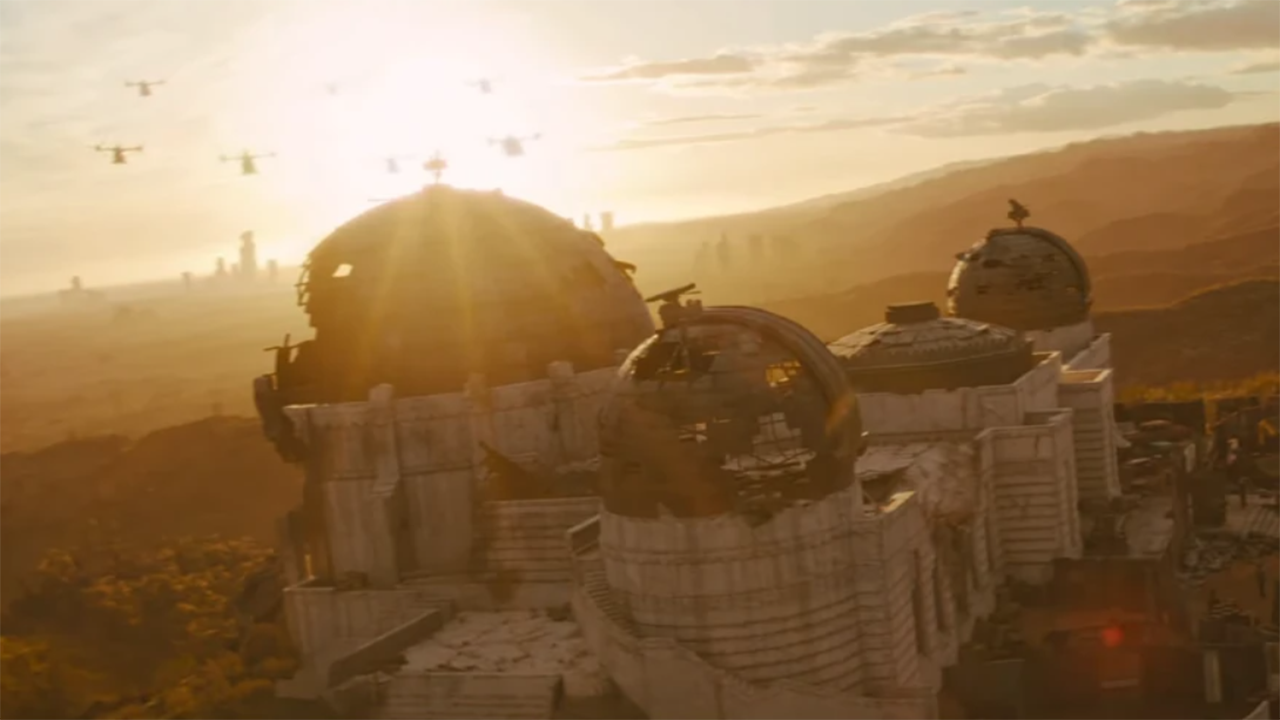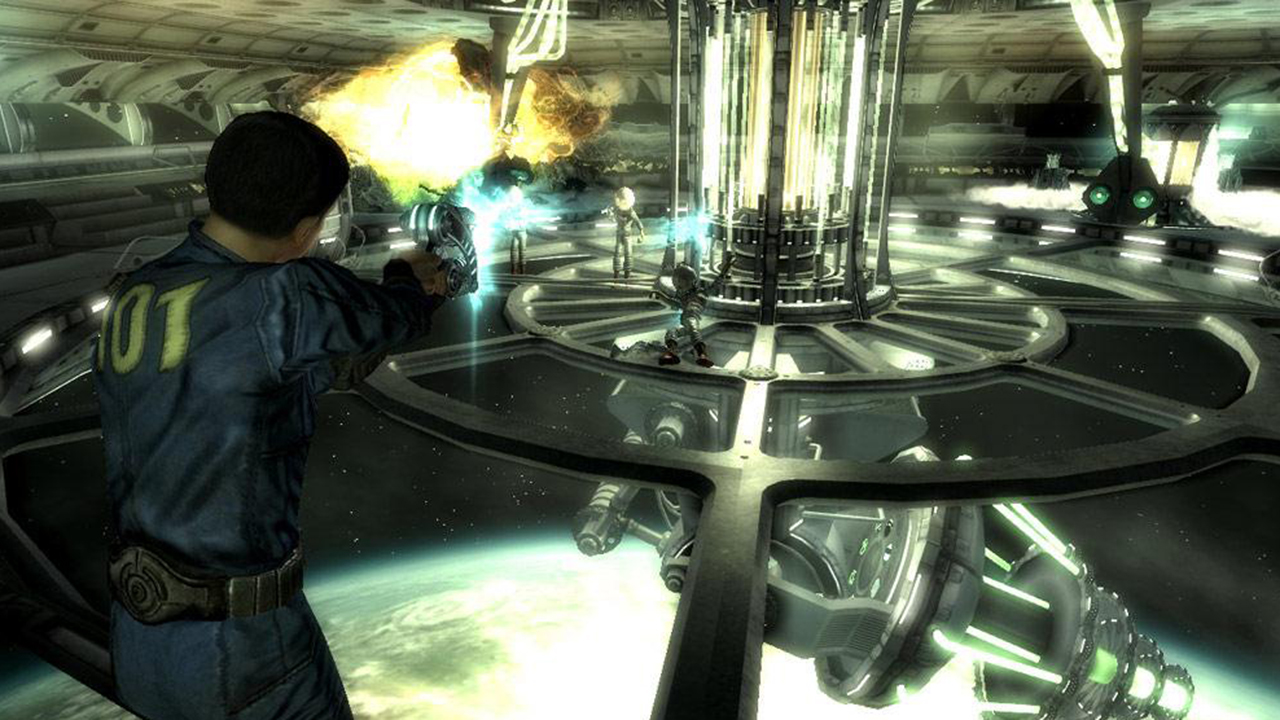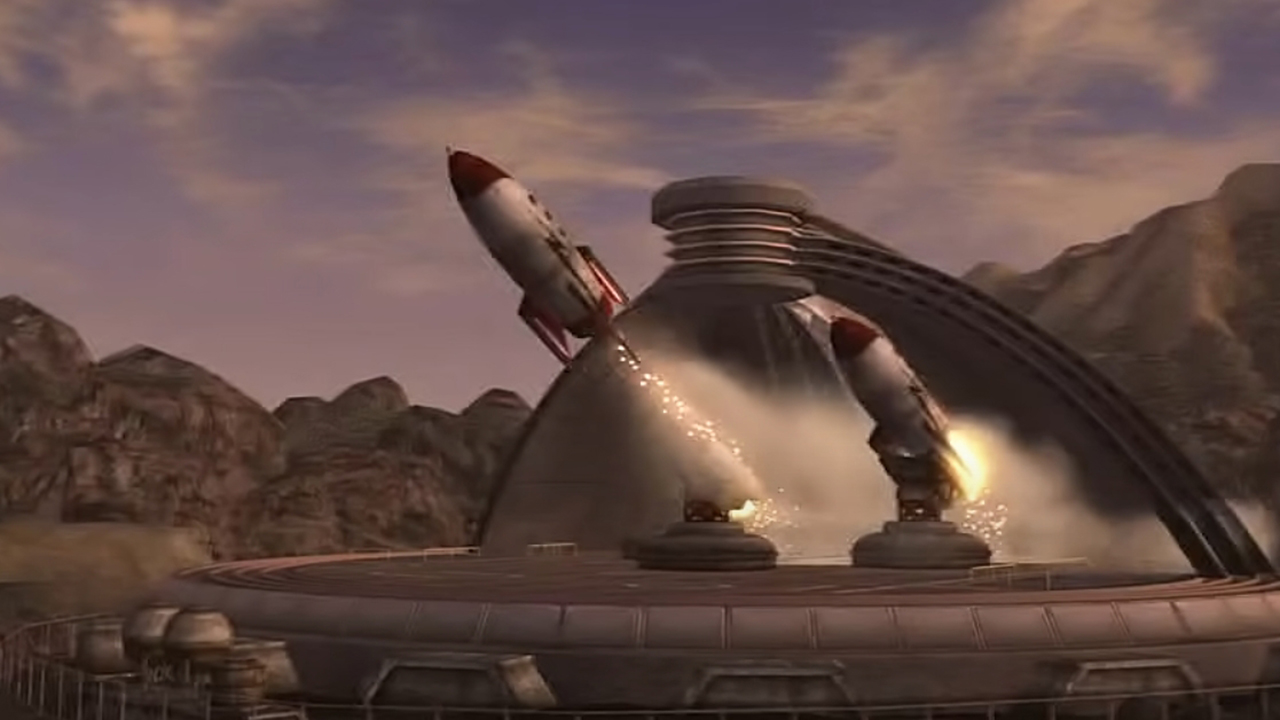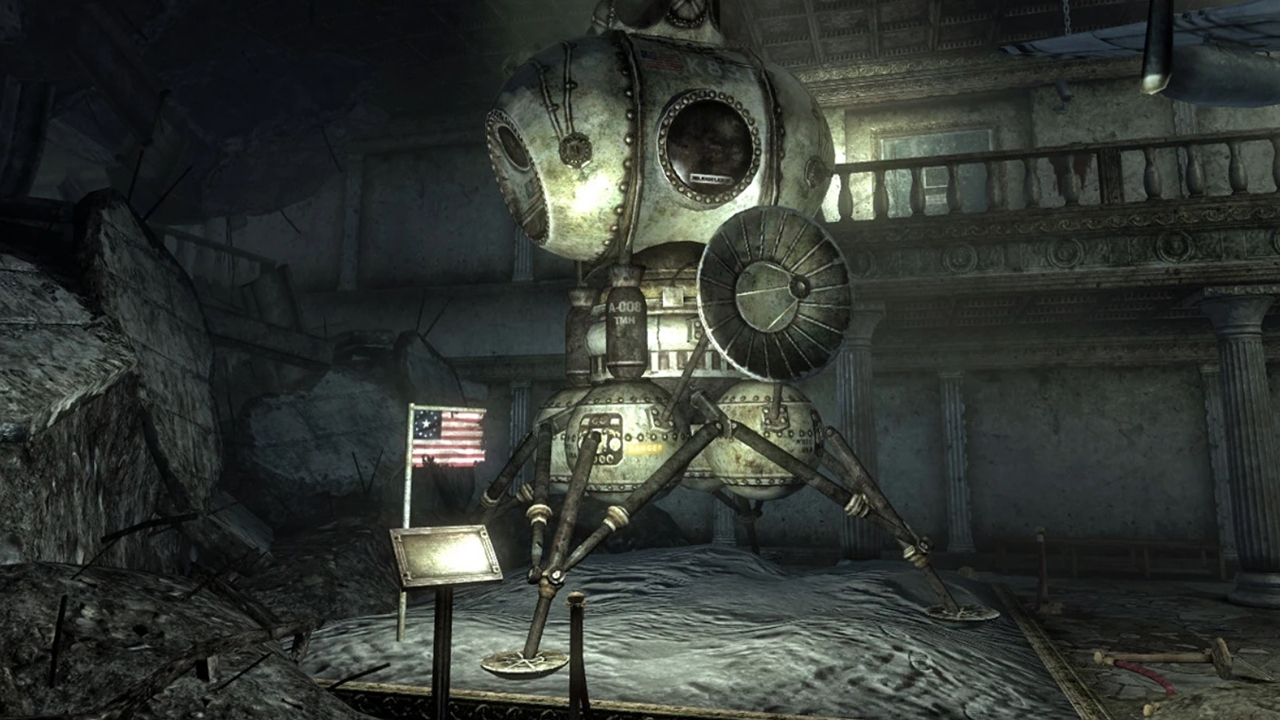Fallout and the Space Age: The franchise's connections and nods to the final frontier
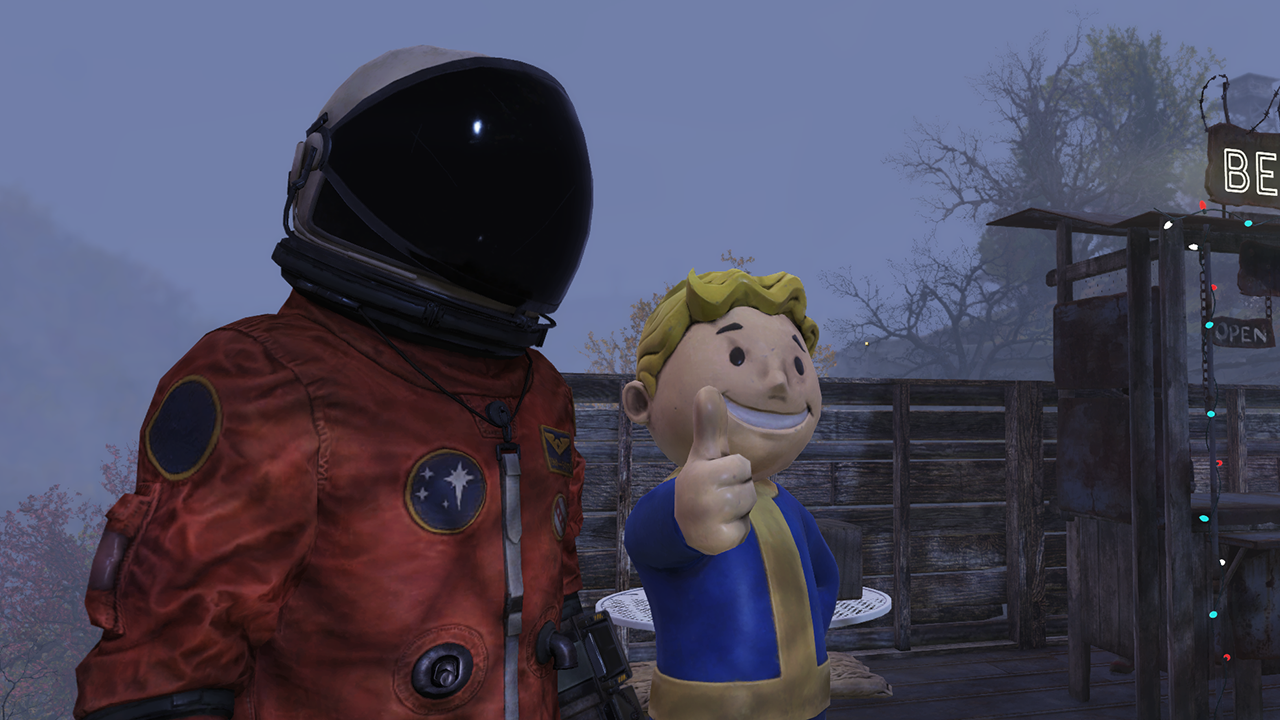
The world of Fallout is set in an alternative universe that diverged after World War II and generally reflects mid-20th-century-style science fiction (the World of Tomorrow) as well as the advancements of the Atomic Age, eventually becoming a retrofuturist vision of Earth before global thermonuclear war happens in the year 2077. But what about its take on outer space? Does the Fallout TV show on Amazon Prime Video feature such connections?
While the entire Fallout video game series is centered on what comes after the nuclear apocalypse happens, with the first chronological game taking place in 2102 and the last in 2287, there's a recurring fascination with outer space and the advancements in space exploration that happened before the Great War of 2077. It's a big part of many side quests as well as the world-building that makes Fallout so special and lived-in, and while most of the references come from before the apocalypse, some characters and events in the Fallout games are directly tied to the final frontier.
Bethesda's interest in space exploration, which is peppered throughout all the modern Fallout games, eventually led to 2023's Starfield, an imperfect but fascinating new IP that's all about our future among the stars. We always recommend giving the Fallout games a fair shake, but if you're all about sci-fi, you should check out the best space games available right now as well as the most exciting ones of 2024 and beyond.
Now, without further ado, let’s briefly explore the most remarkable connections to outer space and retro sci-fi we can find in the Fallout video games as well as the long-awaited TV series, which is available to stream on Prime Video.
The Griffith Observatory in the TV series
While some are yet to see what purpose the famous Griffith Observatory in Los Angeles serves in the Fallout TV series – which takes place in 2296, after the events of all the games released so far – we can infer from its brief appearance in the second trailer that the paramilitary order of the mighty Brotherhood of Steel may be using it as a base of operations for their missions in and around L.A. This makes sense, given it should be quite easy to fortify and defend from other factions and mutant beasts, plus it gives the Brotherhood a good view of the surrounding area.
Before the bombs fell, the Griffith Observatory was affiliated with the infamous Vault-Tec Corporation, the pre-war defense corporation that designed and implemented for the U.S. government a network of massive bunkers known as, you guessed it, Vaults. Information on its pre-war purpose is limited at the moment, but we do know it was designated as a "Science & Friendship Center" unlike the Vaults. Albeit damaged, it survived the Great War and later became occupied by the New California Republic, which promoted pre-war values, and later the Brotherhood of Steel (or so it seems).
Captain Cosmos & Nuka-Girl
Captain Cosmos is a pre-war multimedia entertainment franchise featured through in-game items and references in Fallout 3, Fallout: New Vegas, Fallout 4, and Fallout 76. It's a throwback to the real-life pulp magazines and cartoons of the 1950s. The main characters include Captain Cosmos, Jangles the Moon Monkey, Stella Skyfire, and Doctor Zorbo, among others.
Breaking space news, the latest updates on rocket launches, skywatching events and more!
As far as we know through the games, the Captain Cosmos franchise had a radio series, a TV program, at least two board games, a handful of video games, and a huge ongoing comic book series. While its art can be easy to find in the games, surprisingly deep details about the "lore" of the franchise as well as its impact on the pre-war world are available for those players who like to explore every corner of the game world maps.
As for the highly recognizable Nuka-Girl, she was a promotional character made for the Nuka-Cola Corporation, with its original creation happening around the in-universe year of 2062. Traditionally, she's depicted on the many in-game posters in a pin-up style and as a blonde woman with a retro ray gun: the Thirst Zapper.
The "lore" explanation behind Nuka-Girl and Nuka-Cola's space-related aesthetic is that a rival company sued the iconic corporation over their original bottle designs and won, forcing Nuka-Cola to rebrand and use a Space Age theme that, ironically, made them bigger than before. Who doesn't love the rocketship-shaped Nuka-Cola bottles?
The Zetan aliens
The Zetans, while fully introduced in the Fallout 3 expansion pack Mothership Zeta following a number of Easter eggs in the base game, have gradually become a bigger part of the Fallout mythos. In fact, we've learned through Fallout 76's lore dumps that Zetans operated in pre-war Appalachia and other places across the U.S.
Like many other elements of the Fallout universe, the Zetans are based on popular culture. In this case, the reference was the "gray aliens" commonly referred to as Zeta Reticulans by those who believe in alien visitors and scary abductions, and so Fallout 3 introduced them as a secretive alien species that's been abducting humans and animals for a very long time.
In Mothership Zeta, the Lone Wanderer (Fallout 3's player character) comes across an alien signal, leading them to a crashed Zetan spacecraft that beams them up to Zeta, a massive mothership. After being experimented on and placed in containment cells, they team up with other abductees from Earth's past and present, including a samurai and cowboy, to take over the ship and find a way back to Earth. These events lead to the destruction of a second mothership and two abductees staying aboard Zeta, which becomes Fallout 3's strangest and most memorable 'home base' for the player.
The Great Journey to 'the Far Beyond'
One of the most memorable side quests in all of modern Fallout is New Vegas' 'Come Fly With Me' (triggered by talking to the resident of the town of Novac). The residents fear that mindless ghouls will reach the town, so they send the player character to investigate the Rocket Engineering Production Company of Nevada (REPCONN) test site nearby.
Exploring the main building eventually leads players to Jason Bright, a glowing one (extra dangerous ghoul) who somehow is mentally intact, like some of the luckier regular ghouls. He's obsessed with taking his "Brotherhood" on "the Great Journey" and reaching "the Far Beyond" by using the remaining REPCONN rockets.
The rather lengthy side quest, which contains a number of weighty decisions to make, rewards the player with a space suit and helmet on top of other items, but perhaps the best bit comes at the very end if Jason and his followers enter the rockets and start their 'journey' to outer space: the launch isn't convincing and Jason's Brotherhood is ill-prepared, so chances are they don't make it that far. Alternatively, the player can also sabotage the launch and watch the rockets collide and explode, boosting the gain with the people of Novac (we think it's not worth it).
Space exploration and battles on the moon?
The pre-war United States Space Administration (USSA) is another chunk of modern Fallout lore, an agency whose story is told across a number of locations, logs, items, and even friendly characters. While veteran players remember their visits to the Museum of Technology located in Washington, D.C. (Fallout 3) and its big spaceflight gallery, the USSA – the universe's equivalent of the real-world NASA – also becomes important in some of Fallout 76's side quests.
Much like in our world, the Space Race in the Fallout universe heated up in the 1960s. A Persian house cat named Mr. Pebbles was the first animal that went to space and was brought back alive. Other achievements include the Defiance 7 capsule’s full revolution around the Earth as well as the lunar lander Valiant 11 touching down on the moon in 1969. Missions to Earth's satellite continued until 2052. Fallout 4, however, teased an unknown military campaign fought on our moon called the Sea of Tranquility Conflict, suggesting there's more to the space-related history of the Fallout universe than what we’ve been fed so far.
Last but not least, Fallout 76 also features the remnants of a crashed space station that orbited Earth before the Great War. In the year 2103, the wreckage was fortified by a group of raiders, who decided to use it as their headquarters. According to some of the documents found there, the scientists aboard the station were building a "Space Beam" project. In the same game, Commander Sofia Daguerre also appears after waking up from a "forced hibernation" experiment that supposedly took place aboard the crashed station, which gives diehard Fallout fans a better look into the USSA's pre-war plans.
Fran Ruiz is our resident Star Wars guy. His hunger for movies and TV series is only matched by his love for video games. He got a BA of English Studies, focusing on English Literature, from the University of Malaga, in Spain, as well as a Master's Degree in English Studies, Multilingual and Intercultural Communication. On top of writing features and other longform articles for Space.com since 2021, he is a frequent collaborator of VG247 and other gaming sites. He also serves as associate editor over at Star Wars News Net and its sister site, Movie News Net.
